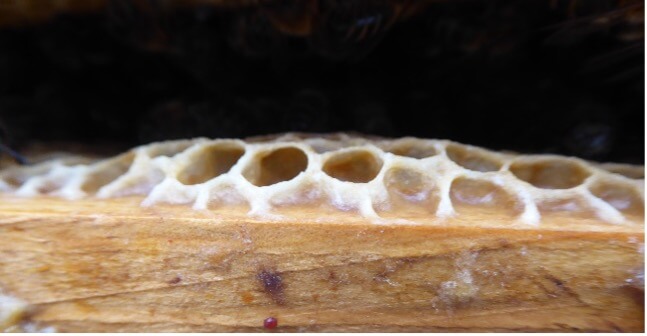The strategy of the beekeeping operation must be adapted to the pace and development of the bees. The progress of the colony build-up, the available flowering in the environment of the hives, and the weather in spring, will determine which tasks will have to be completed and when. All hive management actions in the apiary can be summarized in four categories:
Only robust colonies will be able to produce a significant honey harvest later in the year and respond adequately to management actions by the beekeeper. This is the reason why, first, we must evaluate the strength of those hives which have survived the winter to find out what resources we have and how to optimize colony development with management techniques.
The strength of a colony must be evaluated by observing three components:
A certain minimum number of workers must be present in the colony – a critical mass capable of generating temperatures between 32 and 35 °C (90 – 95°F). Further, the population must be strong enough to care for the bee brood to increase and rejuvenate the hive population in time for the first honey flow. The lower the temperatures in the environment of the apiary, the bigger the critical mass to sustain and develop the colony. In anticipation of possible weather fluctuations typical for the beginning of spring, the workers of the hive must have sufficient nutritional reserves stored in their abdomen, becoming visible when the abdomen is longer than the wings.
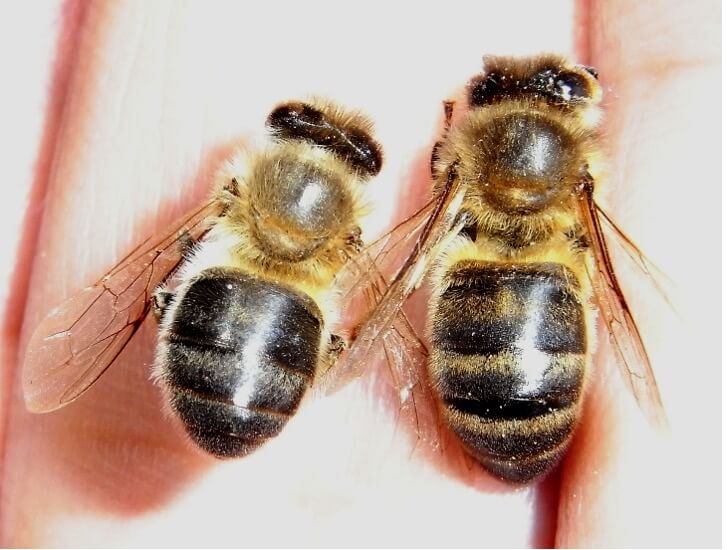
The presence of “short” or “skinny” bees at the hive entrance, and high mortality after a cold spell can be caused by poor nutrition, varroa or nosema.
A good nutritional status of the workers can also be observed in their ability to provide a good amount of royal jelly to the young larvae, so that they are not dry.
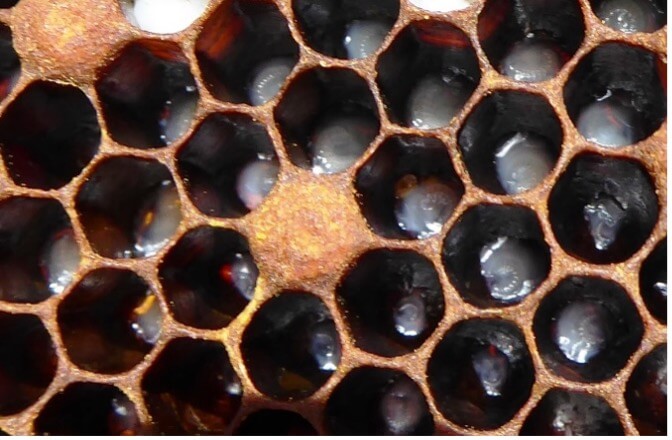
Heat loss should be avoided in hives with a small bee population, which can be accomplished using spacers or hive wraps to allow for better temperature control. In addition, two weak hives can be merged in order to gain one with a better chance of survival.
The quality of a queen is judged by the presence of eggs, egg laying rate, the brood pattern, and the survival of the brood (although this can be negatively influenced by other factors such as varroa, foulbrood, chalkbrood, poor nutrition, residues in wax …).
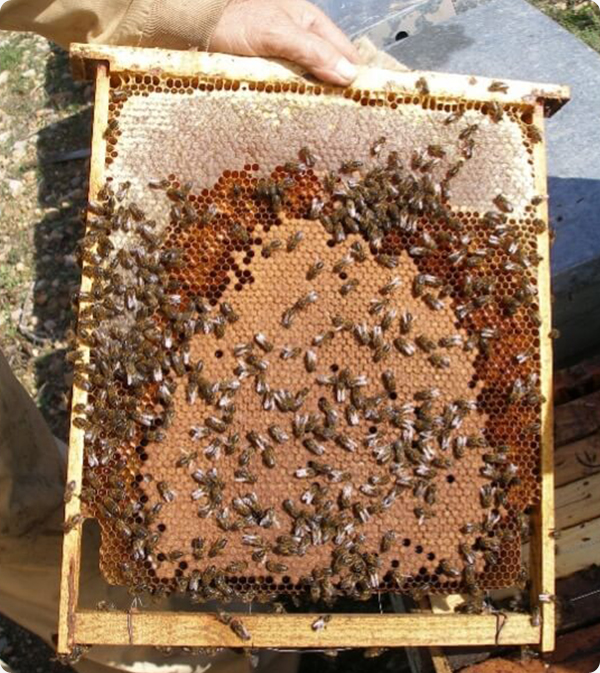
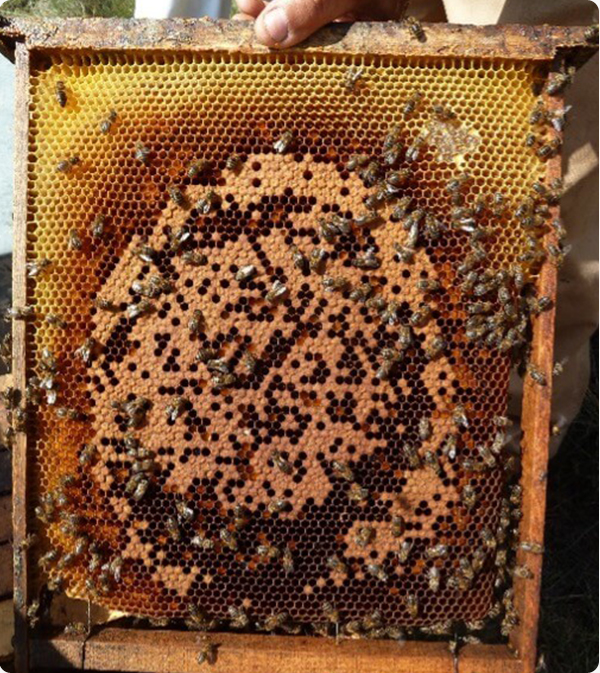
Monitoring the brood, we must also be attentive to the symptoms of diseases that may have generated that lack of survival as shown in Photo 4: varroa, chalkbrood, poor nutrition, foulbrood, residues in the wax …
Queens that lay more than one egg per cell should never be exchanged. This behavior is an indicator that the hive is a drone layer or will be shortly. The only permissible exceptions are queens freshly fertilized during their first week of laying.
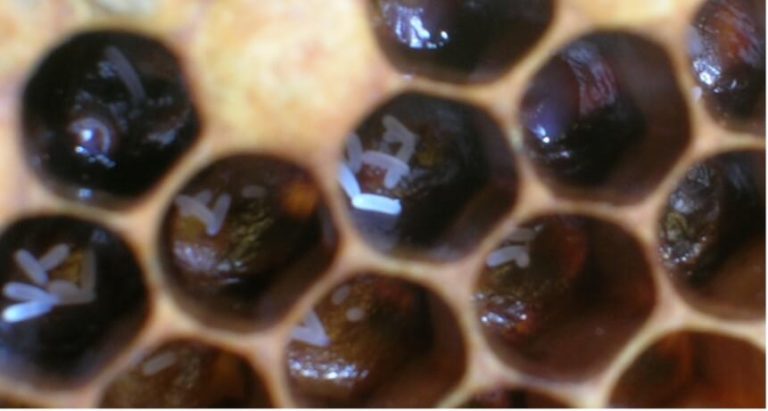
The quality of a queen cannot be determined by her color, nor by her body size (provided she meets a minimum). However, her activity level and liveliness in moving around as well as the status of the edge tips of her wings (if they are ragged she is old, if it they are smooth she is young) are valid criteria to determine the quality of queen bees.
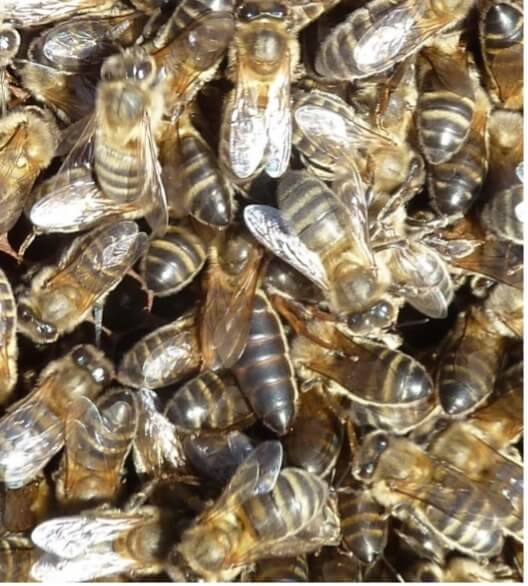
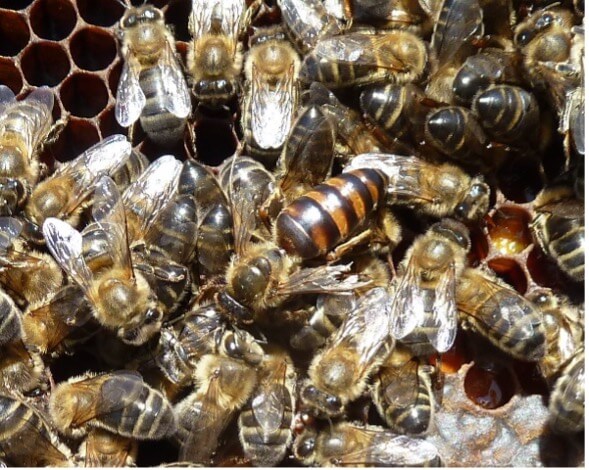
The balanced diet of bees is composed of 80% honey and 20% pollen, which they store around the brood; pollen as a crown around it, and honey as an outer and more extensive layer. Both elements must be within reach of the bees, in an area where low temperatures do not prevent their access. Ideally, they must be close to the brood, which is the best-heated area.
The amount of honey and pollen present depends on the weather and flowering in the environment of the hive. An excess of honey can cause heating problems (honey is a poor conductor of heat), and an excess of pollen can block the growth of the brood area and produce hives with poor population.
A defect of one or another nutrient in the hive can be temporarily compensated by the colony, using the reserves stored in the abdomen of worker bees (“long”, well-nourished bees, see Photo 1). If there are no new incoming resources from flowering, or when applying a complementary feed, honey, pollen, or both (depending on the needs), the bees will become weaker and the brood as well as brood quality will decline (see Photos 2 and 4).
Good population management can help us support and grow the bee population, starting one month or one month and a half before the first honey flow. Stimulating the colonies with liquid syrups and, in the absence of pollen, a protein supplement, can initiate healthy colony buildup. The stimulation is carried out when external temperatures at noon are between 16 and 18 oC. It is important to always be prudent and avoid an imbalance of the bee population between nurse bees and the larvae to be cared for.
In the event that only the contribution of a complementary feed is necessary to maintain the population, it must be pasty.
It is essential to begin the season with as little varroa as possible, since the population will double or triple monthly, and the hive may collapse within a few months. At the beginning of spring, the efficacy of the autumn varroa treatment should be reviewed to evaluate the growth of the residual varroa population. Winters as hot as 2022/2023 force us to stay on guard. After monitoring varroa in the apiaries, the necessity of a spring treatment against varroa should be reviewed.
It is recommended to monitor at least 10 hives per apiary and approximately 25% of all hives in bigger apiaries (>30 colonies). Ideally, colonies from both the edges and the centre of the apiary should be checked. Colonies with suspicious symptoms such as bees with deformed wings (photo 8) disposed pupae (photo 9), or the presence of dead varroa mites in front of the entrance or at the edges should be prioritized for monitoring.
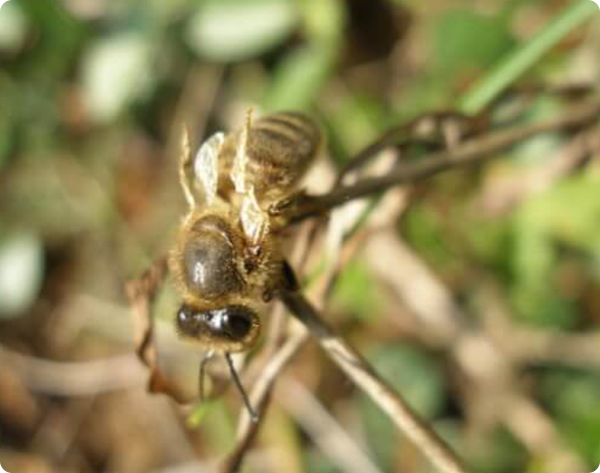
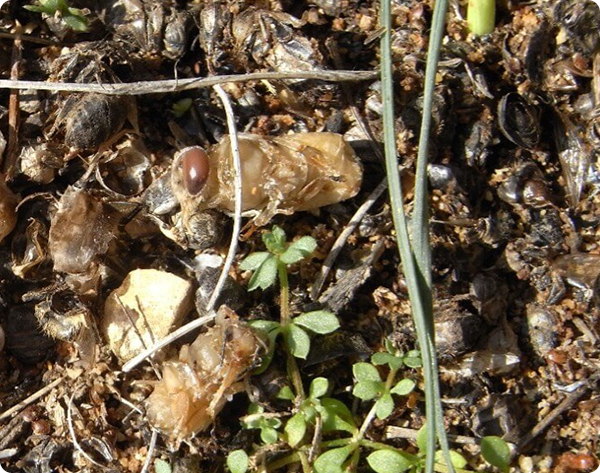
Monitoring of the varroa population can be done on adult bees or on worker offspring. Approximately 1/3 of the varroa population will be on the adult workers of the brood chamber at this time of year, and the remaining 2/3 will be reproducing in the capped brood.
Direct observation of varroa mites on adult bees is not reliable, since only about 20% of them are visible in the middle and upper part, 80% of mites are not visible, attached to the ventral part of the bee. It is necessary to detach them for an accurate estimation of the infestation. For reliable monitoring of the adult bees, about 200-300 workers should be taken from a honeycomb with capped brood, and the mites should be detached with powdered sugar or alcohol.
For monitoring of the worker brood, about 200 cells should be decapped with an extremely sharp knife, or a cutter, and emptied by hitting the lid of a neighboring hive. Monitoring drone brood is not reliable, since it is usually located on the edges of the brood area. It is possible that mites have not yet spread to it, and we obtain false results regarding the presence of varroa.
Threshold levels are 3% on worker bee and 9% on worker operculated brood.
During the winter a certain percentage of mortality will have reduced the number of colonies. In spring, we must replace them to keep the size of our operation stable. Spring is the natural time of reproduction of many species, including bees which develop a swarm instinct. We must try to control that instinct and direct it towards the renewal of the old queens, replace dead hives and, if possible, focus on the production of swarms for sale.
We can simply divide those hives that have produced the best harvest in the previous year, have not had disease problems, and are gentle. The splits resulting from division (“blind nucleus”) will breed its own queen, and, in a month or so, we will have a new hive with a new queen laying.
If we want to be well-prepared in advance, we can previously produce the necessary queens, always from selected hives. Or we can buy them from a warranty provider (queen breeder).
This early into the season, we sometimes see a lack of capped brood cells or even absence of capped cells. This is the ideal prerequisite to apply a varroa control treatment. The smaller the brood area in a hive, the better the effectiveness of all varroa treatments, and the easier it will be to apply them.
The quality of the honeycomb wax is vital. Old, black wax is due to accumulated residues from agrochemicals and varroa treatments, contains a higher number of spores and pathogens, and transmits heat worse than new beeswax.
Spring is also the ideal time for the renovation of approximately 20–30% of the old honeycomb. The damaged, old honeycomb, or frames adjacent to the varroa treatments, should be moved to the sides of the hives. When there is entry of nectar and pollen the time comes when the bees will “whiten” the wax, if the hive has a sufficient population size. We should be able to observe wax sticks, whitish, on top of the frames or / and honeycombs (Photo 10). This growth of the bee population and resource storages is the ideal time to introduce new wax foundatation, better in heated positions, in contact with the brood, and, according to population and meteorology, at first without splitting their nest due to the risk of setbacks.
